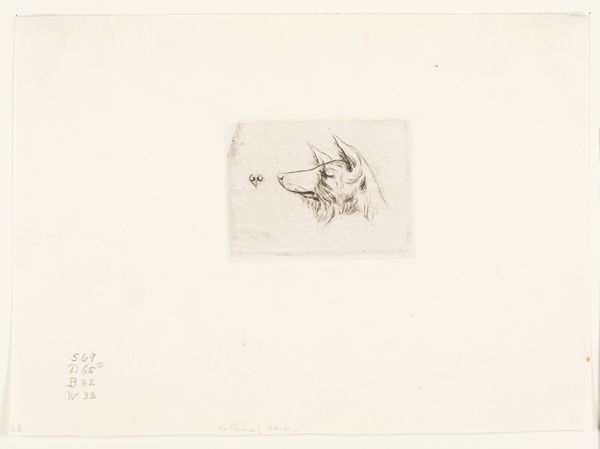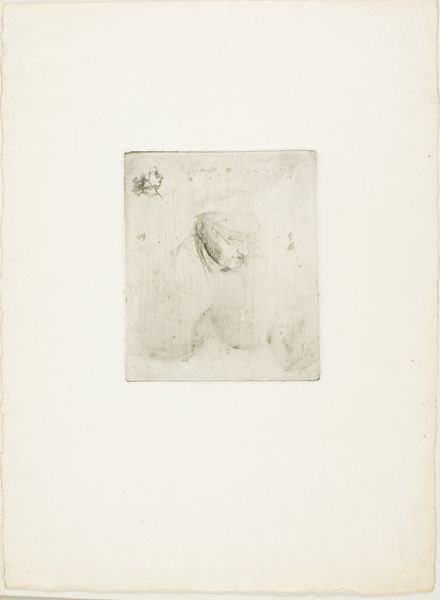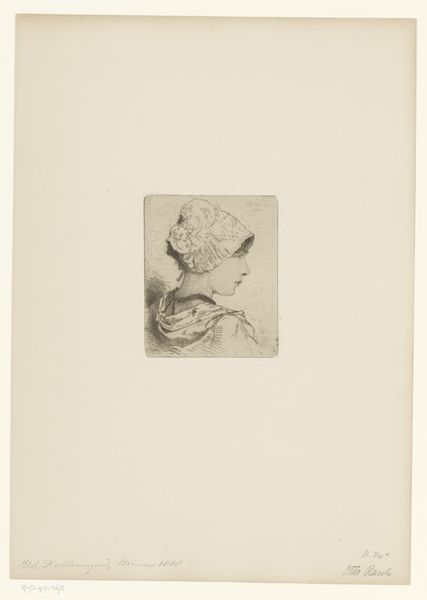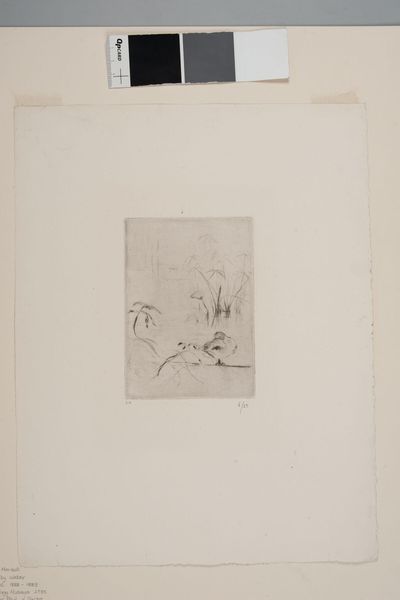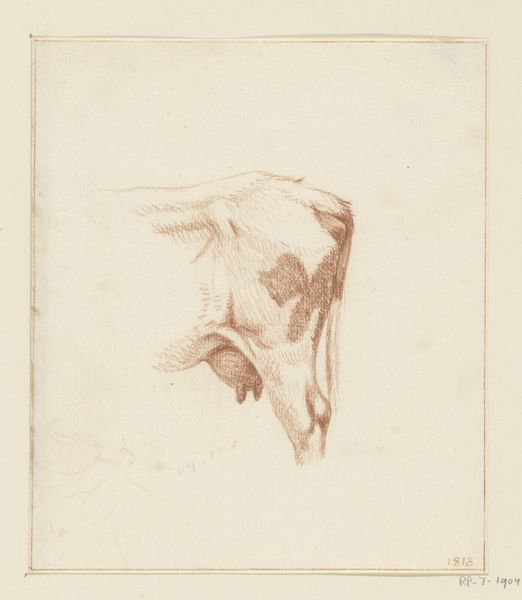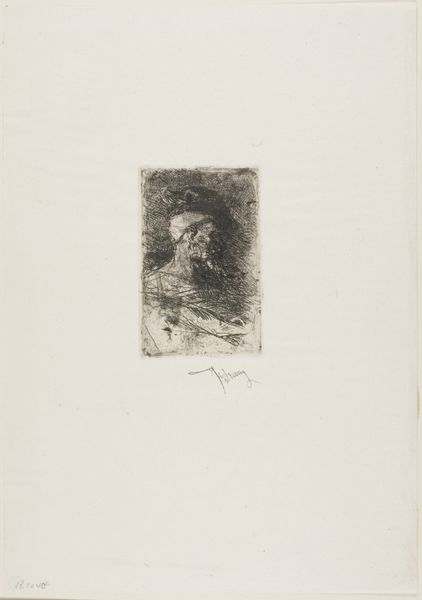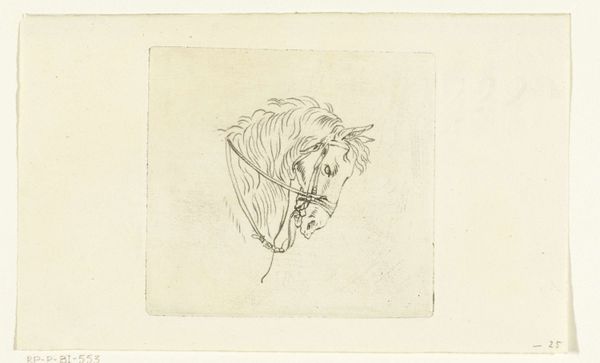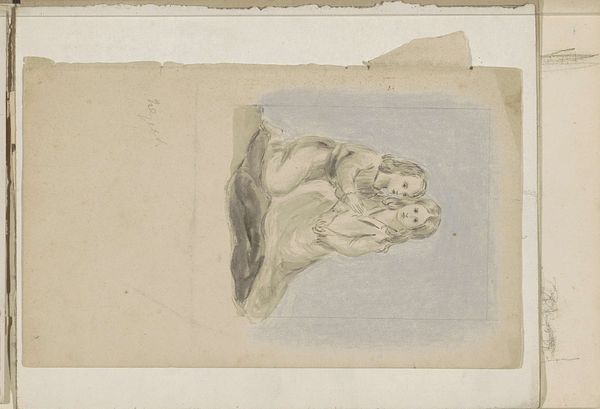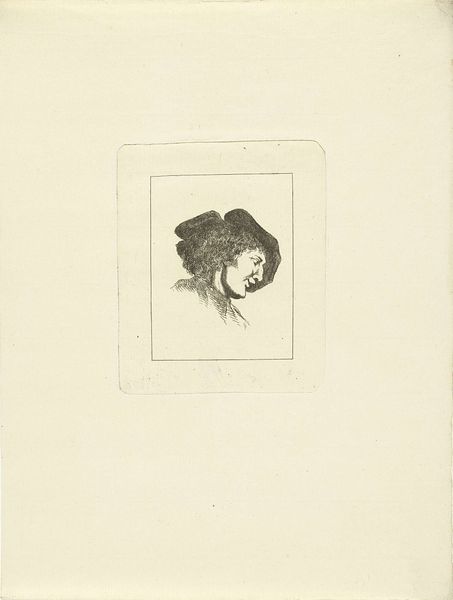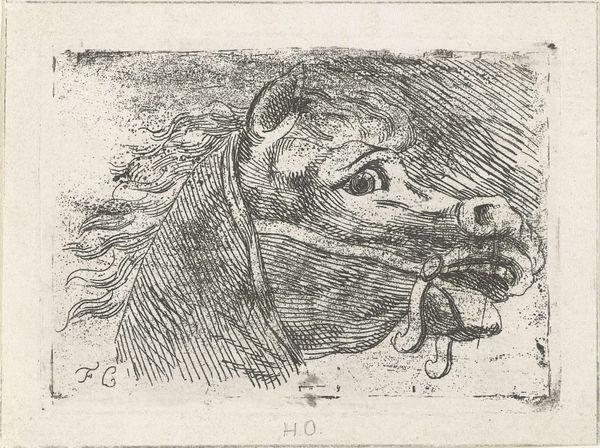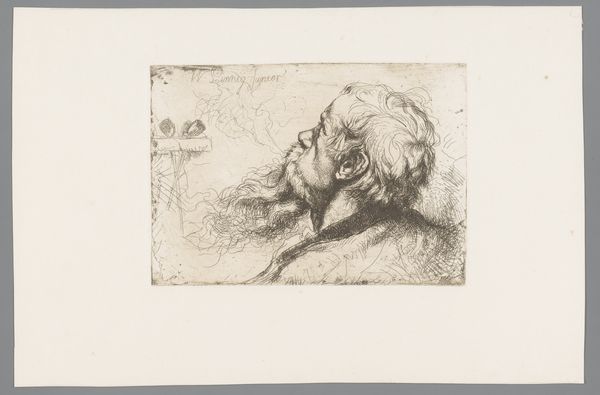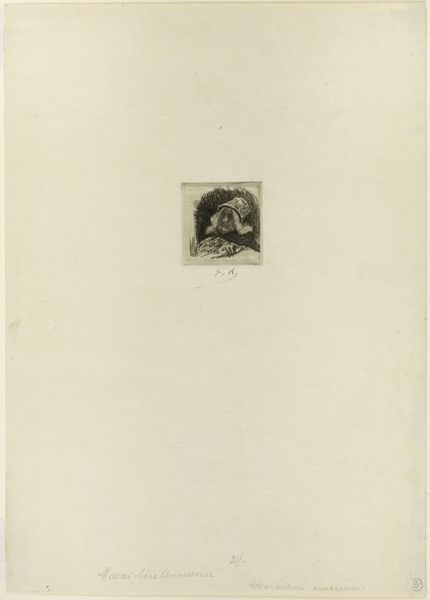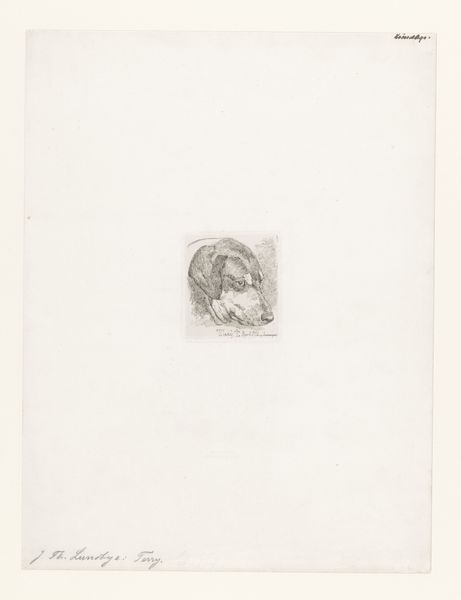
drawing, print, engraving
#
portrait
#
drawing
#
animal
# print
#
engraving
#
realism
Dimensions: height 73 mm, width 72 mm
Copyright: Rijks Museum: Open Domain
Curator: Here we have Pieter Barbiers' "Head of a Sheep," a print dating roughly between 1808 and 1848, part of the Rijksmuseum's collection. It is made from engraving techniques, if I recall. What strikes you initially? Editor: The immediate effect is its quietness, almost melancholy. The limited tonal range emphasizes the texture, especially around the face and wool, which seem to almost recede from the gray and mottled ground. The scale, being quite small I presume, lends a sort of preciousness to it. Curator: Indeed, the limited tonal range you mention can also be thought of as austerity. The social position of sheep during that era, and how artists chose to represent farm animals reflects agrarian ideals, particularly those upheld by the burgeoning middle class. The realism feels charged. It invites introspection on life's fundamentals. Editor: I'm captivated by the way the face is composed of a limited range of strokes. Consider the line delineating the lower jaw. It’s direct and economical but fully captures the sheep’s anatomical structure, all while being abstracted in the composition. Note too the bright scratches suggesting a light reflecting off its fleece—a pure moment of observation and artistry. Curator: But look at the tradition Barbiers is part of! Animal portraiture became something between genre and portraiture. It was often connected with representations of Dutch farmers and therefore linked back to national identities. The engraving itself allows for wider distribution and the promotion of this idea. This image serves an active purpose. Editor: But let us not overlook its inherent artistry while examining its social context. The etching possesses this incredibly directness; an almost childlike simplicity in technique—the directness amplifies the subject, rendering a humble creature majestic. Curator: Both angles give us a deeper insight. Recognizing its historic role tells us so much about the era's perception of rural society. Editor: And seeing its formal artistry sharpens the visual awareness, creating an appreciation for not just its intent, but the technical beauty employed.
Comments
No comments
Be the first to comment and join the conversation on the ultimate creative platform.
